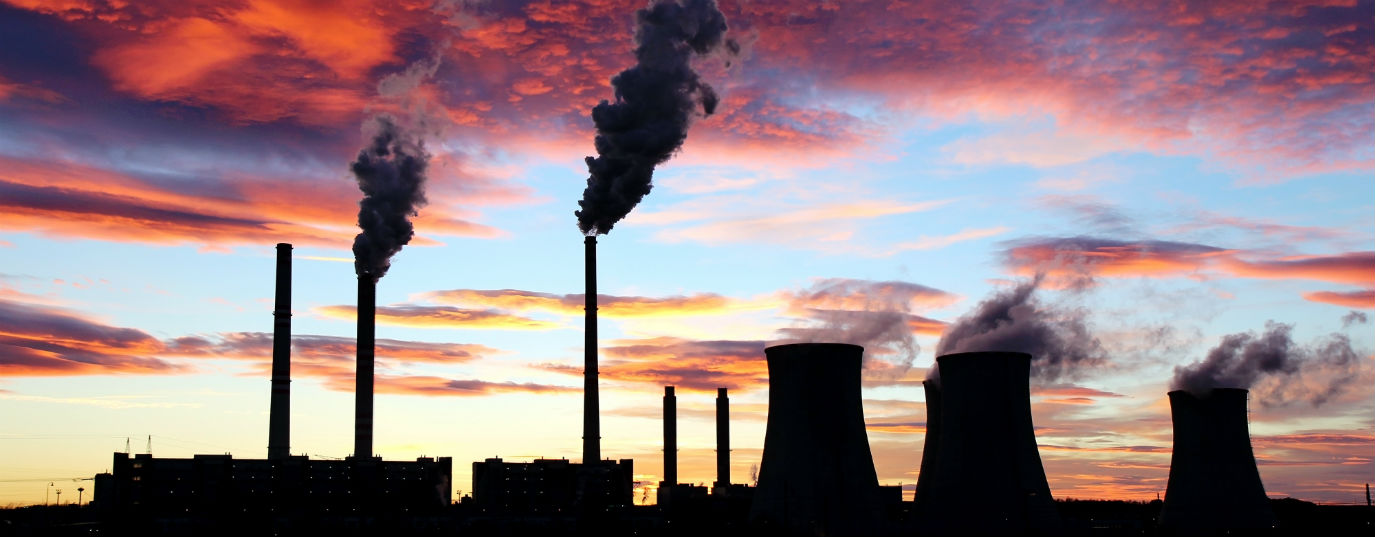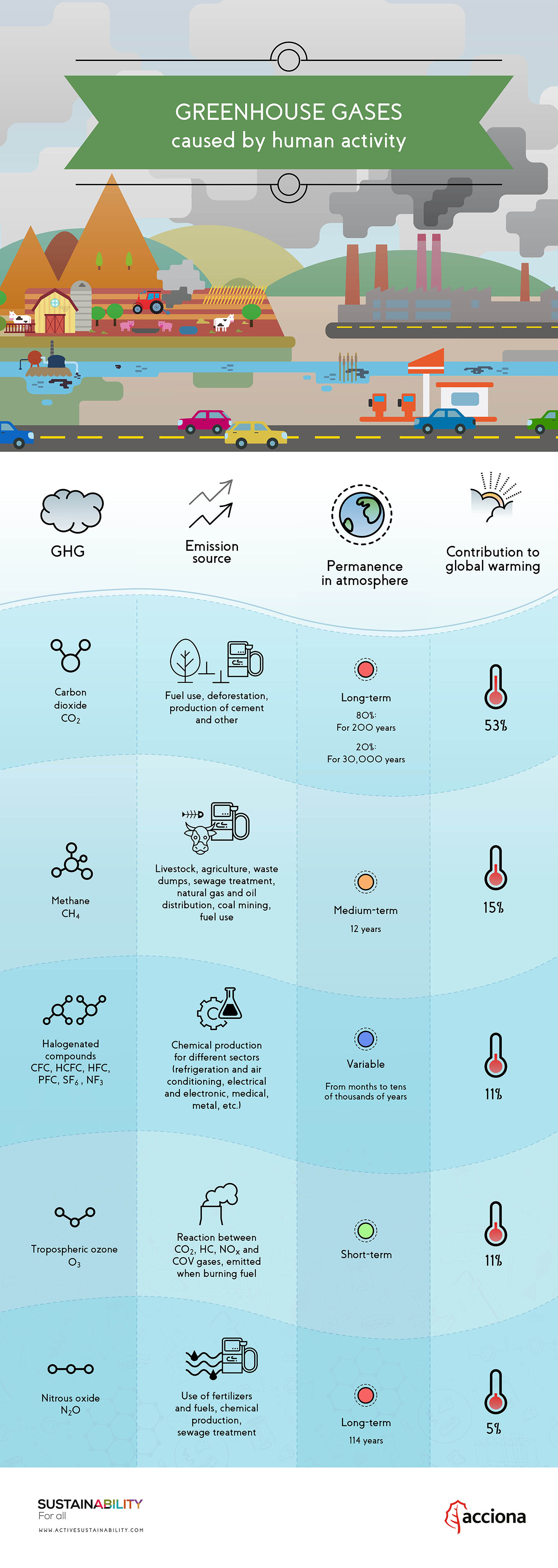How do greenhouse gases contribute to global warming?
Get to know how greenhouse gases contribute to planet global warming and discover how to reduce greenhouse gas emissions thanks to renewable energies
By now, you will know what the greenhouse effect is and how it contributes to causing the impacts of climate change. But do you know which greenhouse gases created by humans most contribute to global warming?
Not all have the same effect, nor do they come from the same sources, and in the same way each lasts for a different time in the atmosphere. To teach you a bit more about these gases, we’ve prepared a static infograph where you can check all this data about greenhouse gases simply, in a table.
We have excluded other variables such as the formation of water of anthropogenic origin and black carbon in snow for their lesser effect.
The effect of greenhouse gases
There are five gases of human origin that contribute most – together up to 95% of the total – to the increase in global warming. Here you will discover the source of their emission, the time they spend in the atmosphere and what percentage they contribute to the greenhouse effect.
Carbon dioxide is responsible for 53% of the level of global warming. It is the result of processes such as fuel use, deforestation and production of cement and other materials. Its permanence in the atmosphere varies, but it’s very high at all times: 80% lasts for 200 years and the other 20% can take up to 30,000 years to disappear.
Methane is the next of the greenhouse gases which has the biggest effect on global warming (15%). This is generated by activities such as livestock production, agriculture, sewage treatment, natural gas and oil distribution., coal mining, fuel use and is also given off from waste tips. It lasts an average of 12 years in the atmosphere.
Halogenated compounds such as CFCs, HCFCs, HFCs, PFCs, SF6 and NF3 are responsible for 11 % of global warming and generated as a result of the production of chemicals by diverse sectors such as refrigeration and air conditioning, electrical and electronic equipment, medicine, metallurgy, and so on. Depending on the type of compound, their duration in the atmosphere varies from a few months to tens of thousands of years.
Tropospheric ozone also has an 11% effect on global warming. This is a product of the reaction between the gases carbon monoxide (CO), nitrogen dioxide (NO₂) and VOCs (Volatile Organic Compounds), given off during the burning of fuels. These gases don’t last as long in the atmosphere as others, a matter of months at the most.
Finally, nitrous oxide also contributes around 11% to the global warming total. It comes mainly from the use of fertilizers, fuel use, chemical production and sewage treatment, and lasts longer in the atmosphere, up to 114 years. 
How to avoid generating greenhouse effect gases
To avoid global warming, it is necessary to reduce greenhouse gas emissions. The best way is to commit to renewable energies, which generate clean electricity without harming the environment or polluting the air. Renewables also help preserve the oceans and forests, which are natural carbon sinks absorbing some of the carbon dioxide.
Sources: IPCC, European Commission, IDEAM, IDEAM II, IPCC II, IPCC III, World Meteorological Organization and IPCC IV.







